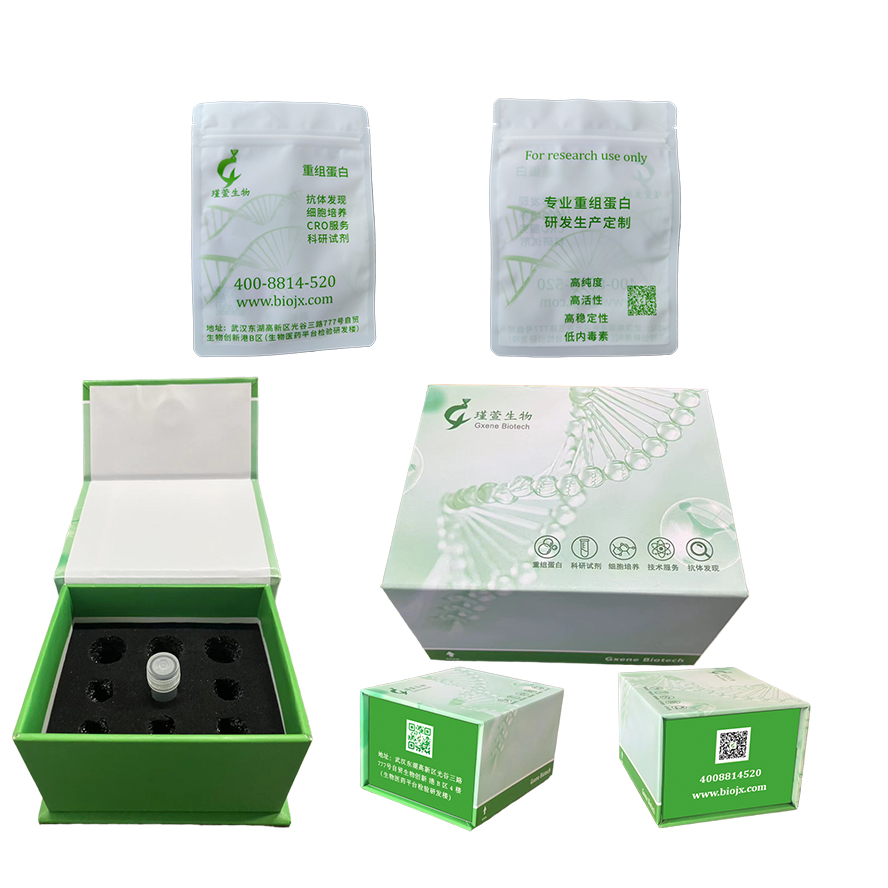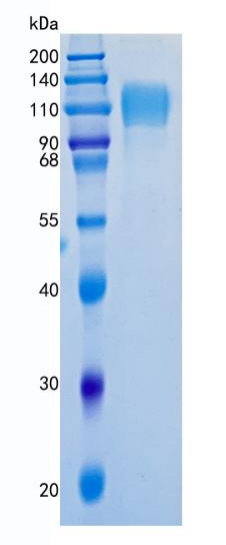



Siglec-5 蛋白是一种假定的粘附分子,与唾液酸依赖性细胞结合有关,对 α-2,3-连接和 α-2,6-连接唾液酸显示出相同的亲和力。值得注意的是,Siglec-5 的唾液酸识别位点可能通过与同一细胞表面上的唾液酸的顺式相互作用而受到掩蔽。
促销: 满免 购物 满300元 免运费。

商品编号: GX004914 库存: 100支
上市时间: 2024-11-20 16:19:05 浏览次数: 589次
研究方向
Siglec-5 蛋白是一种假定的粘附分子,与唾液酸依赖性细胞结合有关,对 α-2,3-连接和 α-2,6-连接唾液酸显示出相同的亲和力。值得注意的是,Siglec-5 的唾液酸识别位点可能通过与同一细胞表面上的唾液酸的顺式相互作用而受到掩蔽。
Measured by the ability of the immobilized protein to support the adhesion of human red blood cells.The ED50 for this effect is 1‑4 µg/mL.
Siglecs (sialic acid binding Ig-like lectins) are I-type (Ig-type) lectins belonging to the Ig superfamily. They are characterized by an N-terminal Ig-like V-type domain which mediates sialic acid binding , followed by varying numbers of Ig-like C2-type domains. Eleven human Siglecs have been cloned and characterized . They are sialoadhesin/CD169/Siglec-1, CD22/Siglec-2, CD33/Siglec-3, Myelin-Associated Glycoprotein (MAG/Siglec-4a) and the Siglec-5 to 11. To date, no Siglec has been shown to recognized any cell surface ligand other than sialic acids, suggesting that interactions with glycans containing this carbohydrate are important in mediating the biological functions of Siglecs. Siglec-5 to 11 share a high degree of sequence similarity with CD33/Siglec-3 both in their extracellular and intracellular regions. They are collectively referred to as CD33-related Siglecs. One remarkable feature of the CD33-related Siglecs is their differential expression pattern within the hematopoietic system. This fact, together with the presence of two conserved immunoreceptor tyrosine-based inhibition motifs (ITIMs) in their cytoplasma tails, suggests that CD33-related Siglecs are involved in the regulation of cellular activation within the immune system. Human Siglec-5 cDNA encodes a 551 amino acid (aa) polypeptide with a hydrophobic signal peptide, an N-terminal Ig-like V-type domain, three Ig-like C2-type domains, a transmembrane region and a cytoplasma tail . Siglec-5 exists as a disulfide-linked homodimer on the cell surface and is expressed on monocytes, neutrophils and B cells . It binds equally well to both alpha 2,3- and alpha 2,6-linked sialic acid .